In recent years, the flat-earth theory has gained traction among a small but vocal group of individuals who believe that the Earth is not a spherical planet but rather a flat, disc-shaped plane.
Despite overwhelming scientific evidence to the contrary, these believers cling to their convictions, citing various reasons and "evidence" to support their claims.
In this enthusiastic blog will explore the beliefs and evidence behind the flat-earth theory, and then provide the scientific counterparts that refute these claims, ultimately reinforcing the fact that the Earth is indeed a sphere.
- What is The Flat-Earth Belief?
- Conclusion
- FAQs
- 1. What is the flat-earth theory?
- 2. What are the main arguments of flat-earth theory supporters?
- 3. How has the flat-earth theory been debunked by science?
- 4. Why does the flat-earth theory persist despite scientific evidence?
- 5. What impact does the flat-earth theory have on society?
- 6. How can I learn more about the flat-earth theory and its debunking?
- 7. Are there any notable documentaries or resources debunking the flat-earth theory?
What is The Flat-Earth Belief?
The Flat Earth Theory challenges the scientific consensus that our planet is spherical, instead claiming it’s a flat disc. Supporters argue that Earth looks and feels flat to human senses, and they offer several alternative explanations to back their views.
Shape: Earth is seen as a disc (circular or square), with the North Pole at the center.
Gravity: Many Flat-Earthers reject gravity, suggesting objects fall due to density and buoyancy rather than gravitational pull.
The Edge: A massive ice wall often associated with Antarctica allegedly surrounds the disc, keeping oceans in place.
While modern science, satellite images, and centuries of evidence strongly support Earth’s spherical shape, the Flat Earth movement remains a curious example of how alternative theories persist.
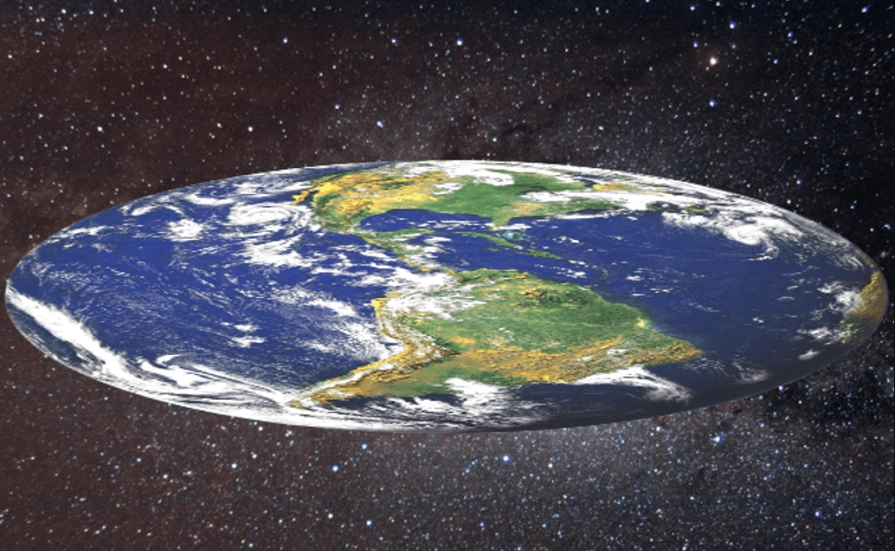
1. Beliefs and Evidence
Of the Flat-Earth Theory
The Horizon Appears Flat: Flat-earthers argue that the horizon appears flat from any vantage point, which they believe is evidence that the Earth is a flat plane.
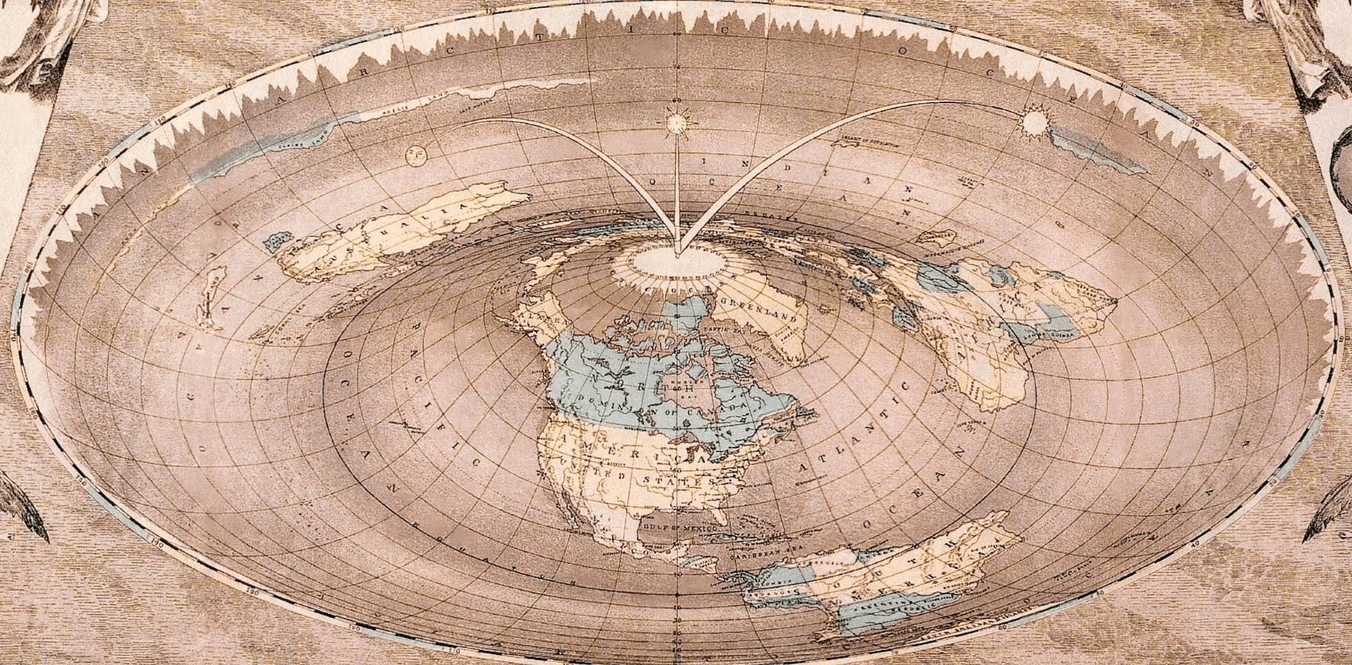
Flat Earth map drawn by Orlando Ferguson in 1893. The map contains several references to biblical passages as well as various supposed refutations of the "Globe Theory".)
Objects Don't Disappear Over the Curvature: They claim that objects, such as ships or buildings, don't disappear over the curvature of the Earth as they move away from the observer.

Earth Curvature
Lack of Observable Curvature: Flat-earthers assert that there is no observable curvature of the Earth, even from high altitudes or from space.
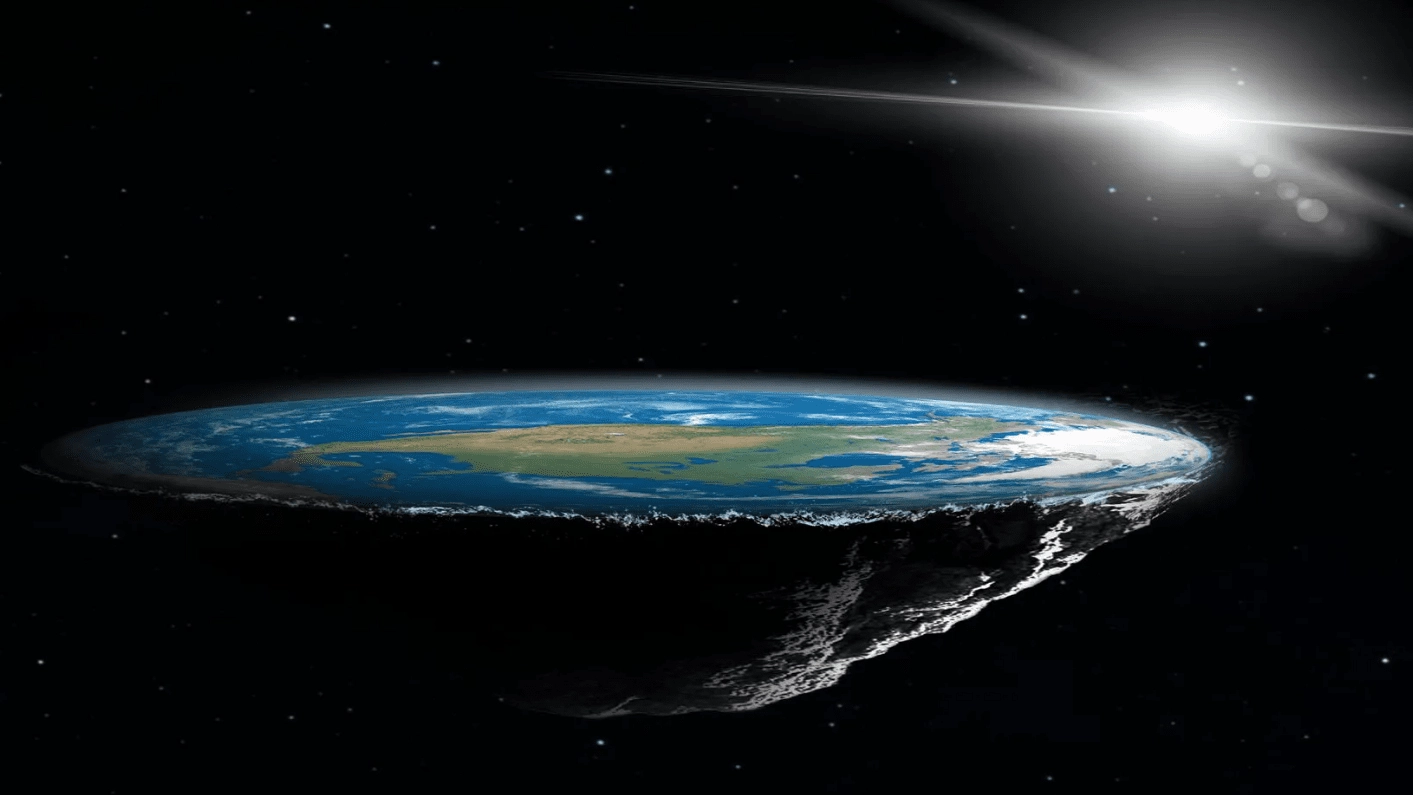
Conspiracy Theories: Some flat-earthers believe in conspiracies, claiming that governments and organizations are involved in a massive cover-up to perpetuate the "globe myth."
2. Scientific Counterparts and Debunking
The Horizon's Appearance: The horizon appears flat due to the Earth's vast size and the limitations of human perception.
However, numerous experiments, such as those conducted by Aristotle and Eratosthenes, have proven the Earth's curvature.
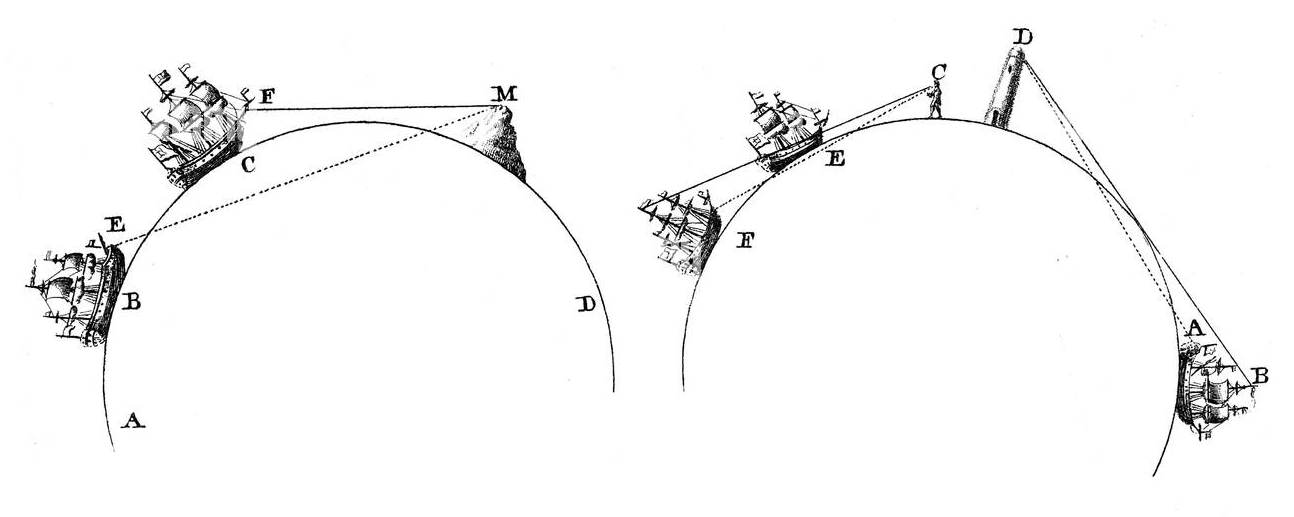
Object Disappearance: Objects do disappear over the curvature of the Earth due to the Earth's spherical shape. This phenomenon can be observed with ships at sea or buildings from high vantage points.
Observable Curvature: The Earth's curvature is observable from high altitudes, such as from airplanes or spacecraft. Additionally, photographs taken from space clearly show the Earth's spherical shape.

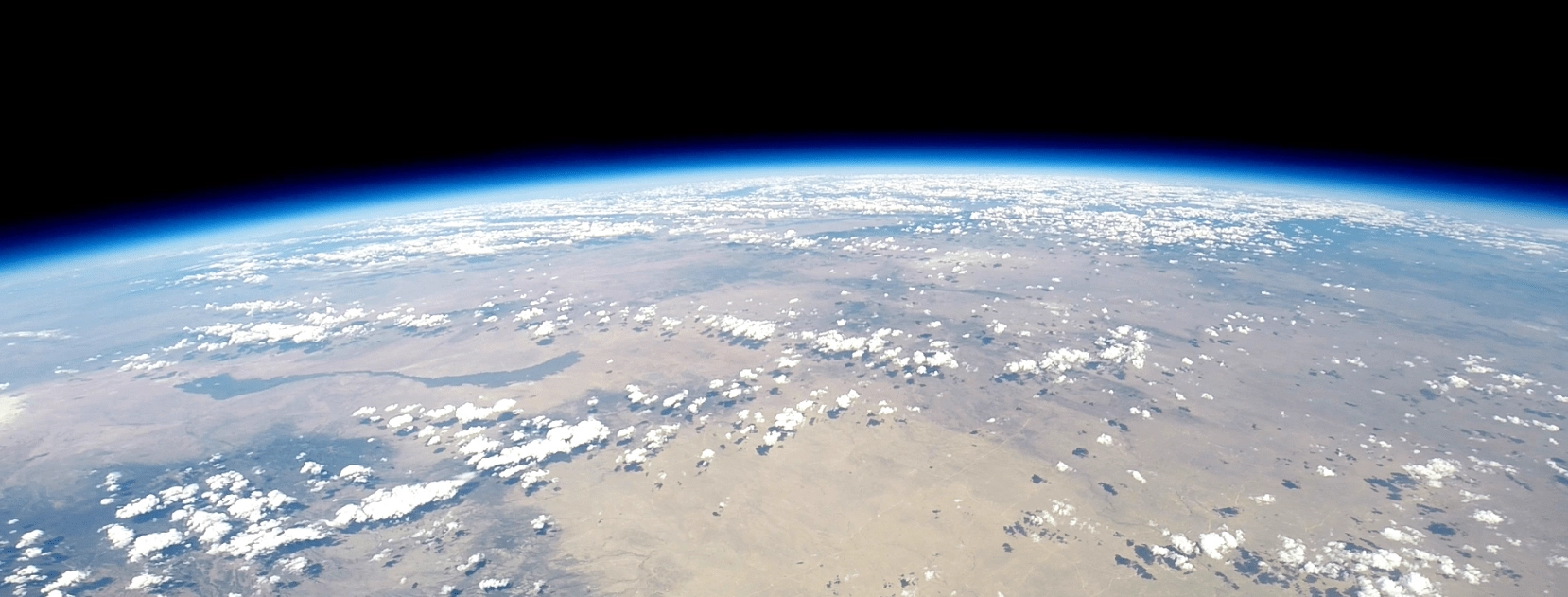
Scientific Consensus: The overwhelming majority of scientists and scientific organizations worldwide agree that the Earth is a spherical planet, based on extensive research and evidence spanning centuries. The Bedford Level Experiment

The Bedford Level Experiment is a series of observations conducted in the 19th and early 20th centuries, aimed at proving the Earth is flat, but actually ended up debunking the Flat-Earth theory.
3. The Flawed Attempt to Prove a Flat Earth
Samuel Birley Rowbotham, a proponent of the flat Earth theory, performed the initial experiment in 1838. He observed a boat sailing away on the river and claimed to see the entire boat, including the top of the mast, over a distance of 6 miles.
Based on this, he argued that if the Earth curved, the hull of the boat would disappear from sight before the mast, which he claimed did not happen. This according to him, proved the Earth was flat
An Astronomer Responds To Flat Earth

Based on this, he argued that if the Earth curved, the hull of the boat would disappear from sight before the mast, which he claimed did not happen. This according to him, proved the Earth was flat.
Alfred Russel Wallace Shows the Earth's Curve
Later, in 1870, the famous biologist Alfred Russel Wallace repeated the experiment with some key changes. He considered the effect of atmospheric refraction, which bends light slightly and can make distant objects appear higher than they actually are.
Taking refraction into account, Wallace showed that the observations were indeed consistent with a curved Earth. The slight rise in visibility due to refraction compensated for the Earth's curvature, allowing the entire boat to be seen.
The Experiment's Significance
The Bedford Level Experiment highlights the importance of considering all factors in scientific measurement.
While Rowbotham made a flawed observation, Wallace's corrected experiment provided evidence supporting the well-established fact that the Earth is a sphere.
Notable Scientists and Their Contributions
Throughout history, numerous scientists have contributed to our understanding of the Earth's shape and have played pivotal roles in debunking the flat-earth theory:
Aristotle (384-322 BCE) Aristotle provided one of the earliest arguments for a spherical Earth, based on observations of lunar eclipses and the changing positions of stars.
⇒ Observation: He noticed the Earth cast a round shadow on the moon during a lunar eclipse. This could only happen if the Earth itself were spherical.
⇒ Logical Reasoning: Aristotle believed in natural motion, where objects moved towards their natural place. For Earth, the heaviest element, its natural place would be the center of the universe. He reasoned that gravity would pull all parts of the Earth towards the center, naturally forming a sphere.
Eratosthenes (276-194 BCE) Eratosthenes's contribution to our understanding of the Earth's shape wasn't just about proving it was round (which many already believed by his time).
He took a giant leap forward by calculating the Earth's circumference with remarkable accuracy for the time period (around 240 BC). Eratosthenes's work made a big difference:
⇒ The Measurement Method: Eratosthenes knew that at noon on the summer solstice, the sun's rays would shine directly down a well in Syene (present-day Aswan, Egypt).
However, in Alexandria, another Egyptian city further north, the sun would cast an angle at midday. By measuring this angle and knowing the distance between the two cities, he could calculate the Earth's curvature.
⇒ The Genius of the Idea: The key to his method was the assumption that the sun's rays were essentially parallel (which is a good approximation for the vast distance between the sun and Earth). This allowed him to create a proportional relationship between the angle measured in Alexandria, the distance between the two cities, and the Earth's circumference.
⇒ Accuracy and Legacy: While his calculations weren't perfect (estimates suggest they were off by about 0.5% to 17%), they were incredibly close for the time period and with the limited tools available. This achievement provided strong scientific evidence for the spherical Earth and its actual size.
Galileo Galilei (1564-1642) Galileo Galilei's contribution to the Earth's shape wasn't as direct as Eratosthenes or Aristotle. By his time, the spherical Earth concept was well established. However, Galileo's work on astronomy indirectly supported and strengthened this understanding. Such as-
⇒ No evidence of parallax: One lingering argument against the Earth revolving around the Sun (heliocentrism) was the lack of observed stellar parallax.
If the Earth orbited the Sun, the position of nearby stars would appear to shift slightly throughout the year. Galileo, despite his powerful telescope, couldn't detect this parallax. (The reason? Our nearest stars are incredibly distant, making the parallax shift very small.
⇒ Heliocentrism and a spherical Earth go hand-in-hand: While the lack of parallax wasn't conclusive, Galileo's advocacy for the heliocentric model (based on the work of Copernicus) strongly supported a spherical Earth. In a heliocentric model, a flat Earth wouldn't make sense. Planets would need a flat surface to orbit the Sun.
⇒ Phases of Venus: Using his telescope, Galileo observed that Venus went through phases, just like the Moon. In a flat-Earth model, Venus would always appear full or nearly full. The phases of Venus could only be explained if Venus orbited the Sun, which strongly supported a heliocentric model (Sun-centered) with a spherical Earth.
Sir Isaac Newton (1642-1727) Isaac Newton's contribution to understanding the Earth's shape wasn't through direct observation, but through applying his theories of gravity and motion. Newton's laws of motion and gravitational theory helped explain the Earth's spherical shape and its orbit around the Sun.Here's how his work was significant:
⇒ Mathematical Modeling: Newton theorized that the Earth wasn't a perfect sphere, but an oblate spheroid, bulging slightly at the equator and flattened at the poles.
⇒ Gravity and Rotation: He reasoned that Earth's rotation would cause a centrifugal force that would counteract some of gravity's pull, leading to this bulge.
⇒ Calculations: By using his laws of motion and estimates of Earth's mass and rotation, Newton calculated the ratio between the polar and equatorial diameters.
Modern Scientists
Contemporary scientists from various fields, such as astronomy, physics, and geography, continue to provide overwhelming evidence for a spherical Earth through advanced technology and research.
Interesting Facts ♦
The flat-earth theory dates back to ancient times but was largely discredited by the 3rd century
BCE. ♦
The Flat Earth Society, founded in the 19th century, helped revive and spread the belief in a flat
Earth. ♦
Experiments like Sinking Ship and Bedford Level Experiment provided tangible evidence against the
Flat-Earth Theory. ♦
The Earth's spherical shape is responsible for its ability to sustain life and support complex ecosystems. ♦ Circumnavigating the globe and observing the changing positions of celestial bodies are clear proofs of a spherical Earth.


Conclusion
While the flat-earth theory may seem appealing to some, it is a belief that is scientifically unsound and contradicted by overwhelming evidence and centuries of research by renowned scientists.
From observations of lunar eclipses and the changing positions of stars to the curvature observed from high altitudes and space, the evidence for a spherical Earth is indisputable. As science enthusiasts, it is our responsibility to embrace scientific facts and reject unfounded theories that lack empirical support.
FAQs
1. What is the flat-earth theory?
The flat-earth theory is the belief that the Earth is flat rather than an oblate spheroid. Proponents of this theory argue that most scientific evidence supporting a round Earth is fabricated or misinterpreted.
However, this belief is widely discredited by the scientific community, which provides overwhelming evidence, including satellite images and gravity principles, that demonstrate the Earth’s roundness.
2. What are the main arguments of flat-earth theory supporters?
Supporters of the flat-earth theory often present various arguments such as:
The horizon always appears flat, regardless of elevation.
Water surfaces appear to be flat at rest, leading to the conclusion that larger bodies of water are also flat.
Plane flight paths ('curved' routes) seem illogical on a flat map.
These arguments are based on misconceptions and lack understanding of fundamental physics and optics.
3. How has the flat-earth theory been debunked by science?
Scientific debunking of the flat-earth theory includes:
Photographic Evidence: Satellite images from space clearly show the Earth as a sphere.
Gravity: The principles of gravity explain how massive bodies like the Earth can maintain a spherical shape due to their gravitational pull.
Circumnavigation: The ability to travel around the globe by air or sea supports the spherical Earth model.
Astronomical Observations: Observations of other celestial bodies, which are spherical, reinforce the understanding that planets, including Earth, are round.
4. Why does the flat-earth theory persist despite scientific evidence?
The persistence of the flat-earth theory can be attributed to:
Mistrust in Authorities: Some individuals have a deep-seated skepticism of scientific institutions and authority figures.
Community Belonging: Online communities provide a sense of belonging and identity for flat-earth believers.
Cognitive Dissonance: Accepting scientific evidence contradicts long-held beliefs, which can lead individuals to cling to those beliefs more fervently.
5. What impact does the flat-earth theory have on society?
The flat-earth theory can lead to:
Misinformation: Spreading false information can erode public trust in science.
Educational Challenges: Belief in the flat-earth theory can hinder learning and critical thinking in scientific fields.
Social Division: It creates an us-versus-them mentality between believers and the scientifically literate, polarizing discussions around scientific literacy.
6. How can I learn more about the flat-earth theory and its debunking?
To learn more about the flat-earth theory and its debunking, consider:
Reading scientific literature or articles that cover the spherical nature of Earth.
Exploring documentaries or educational videos that explain the physics of gravity and astronomy.
Engaging with reputable science websites or platforms that debunk common misconceptions related to the flat-earth theory.
7. Are there any notable documentaries or resources debunking the flat-earth theory?
Yes, several documentaries and resources effectively debunk the flat-earth theory, including:
"Behind the Curve": A documentary that explores the flat-earth movement and the arguments against it.
YouTube Channels: Channels like “SciShow” and “PBS Space Time” often tackle misconceptions and explain the science behind a spherical Earth.
Articles: Scientific magazines such as Scientific American or National Geographic offer detailed articles countering flat-earth claims.
Feel free to ask if you have more questions or need further information!


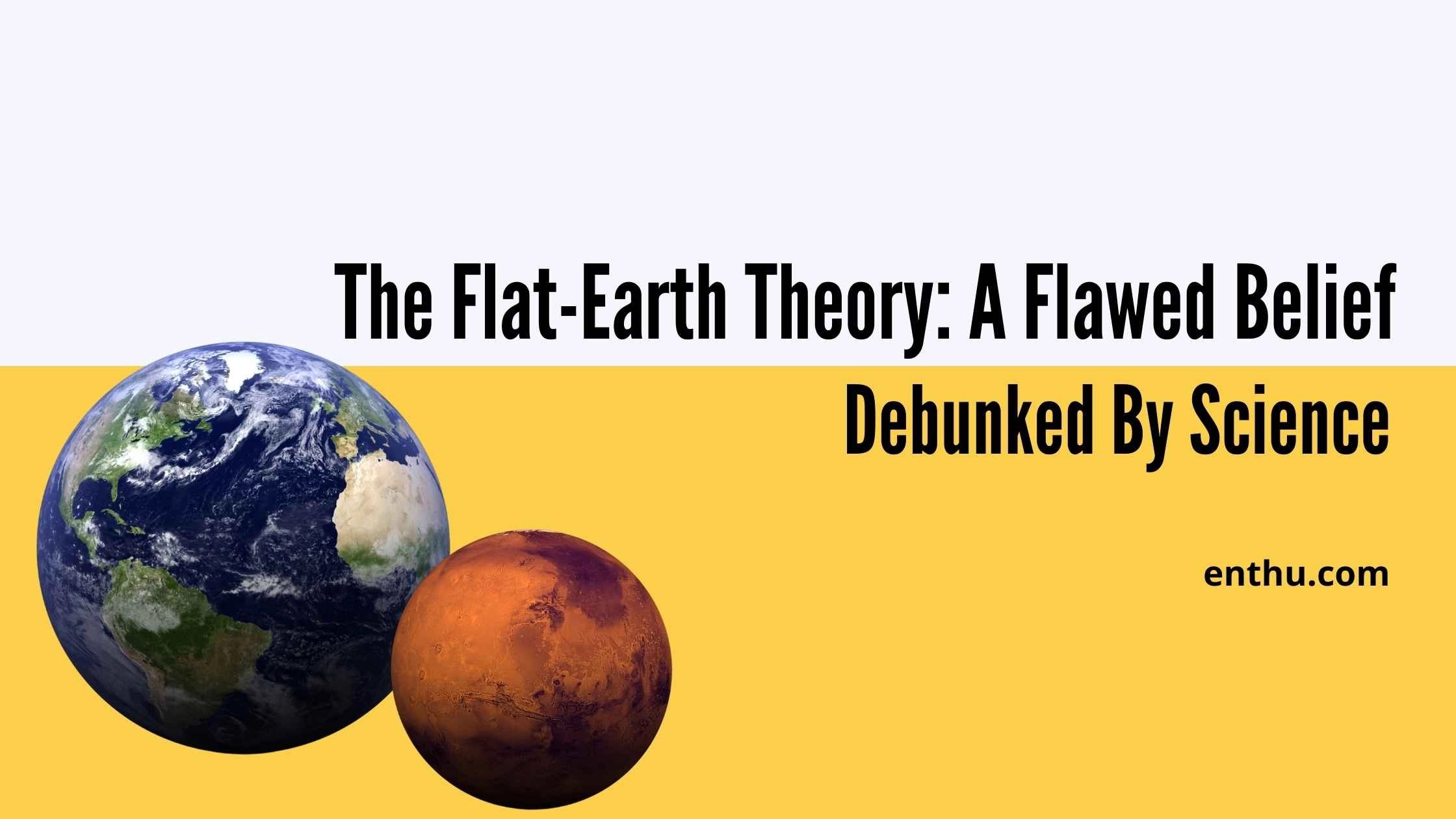
.png)


Comments